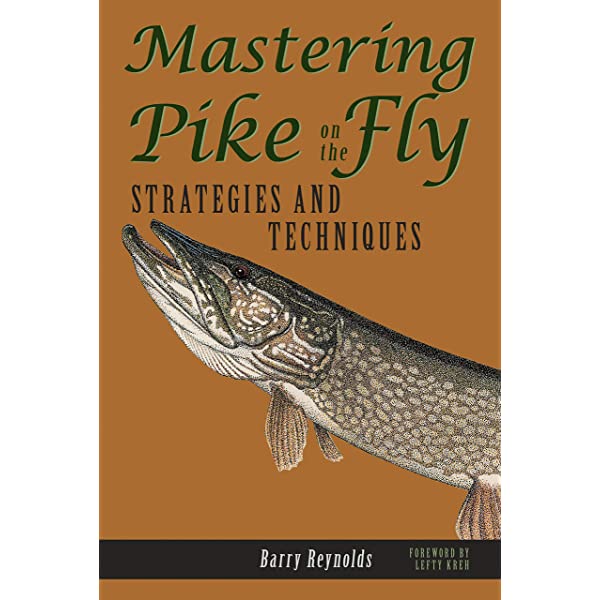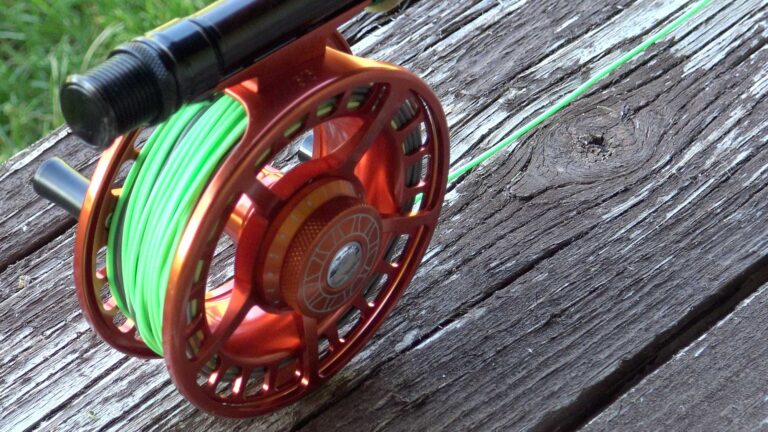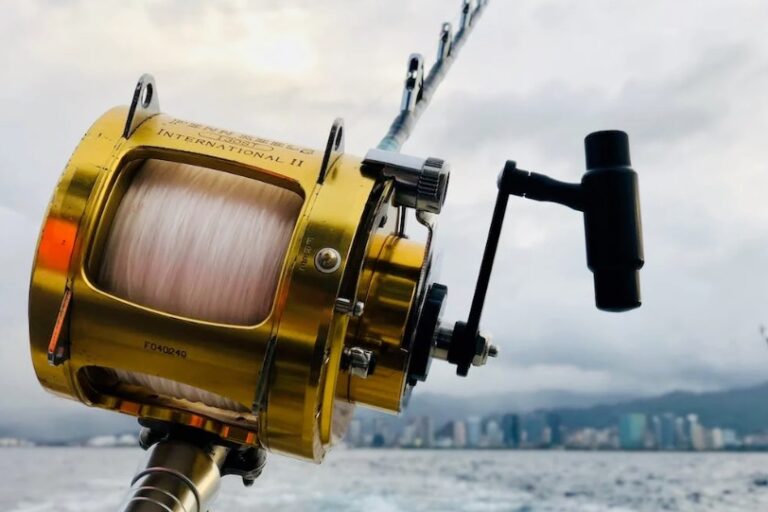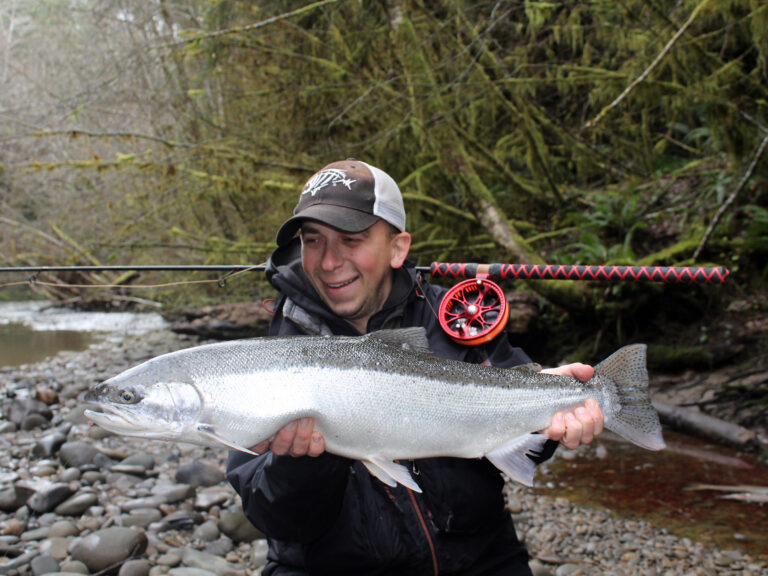The fly reel does matter in fishing because it plays a crucial role in the overall performance and success of anglers. A well-designed and properly functioning fly reel can make casting smoother, provide better control over the line, and help in landing fish efficiently.
Additionally, the quality of materials, drag system, and overall craftsmanship of the fly reel can affect its durability and long-term reliability. Therefore, choosing the right fly reel for the specific fishing conditions and target species is essential for a successful angling experience.

Credit: www.flyfisherman.com
The Importance Of A Fly Reel
The Role Of A Fly Reel In Fly Fishing
A fly reel is an essential piece of equipment in fly fishing. It serves multiple purposes, contributing to the overall success and enjoyment of the fishing experience. Here are the key points to understand about the role of a fly reel:
- Line storage: The primary purpose of a fly reel is to store the fly line. It keeps the line organized and easily accessible, preventing tangling and allowing for smooth casting.
- Line retrieval: When a fish takes the bait and starts to run, the angler can quickly retrieve the line using the reel. The reel’s smooth drag system helps to control the tension and prevent the line from snapping.
- Fighting fish: A fly reel also assists in fighting and landing fish. As the fish puts up a strong resistance, the angler can let the fish run by releasing the line from the reel. Then, when the fish pauses or starts to tire, the angler can reel in the line, gradually bringing the fish closer.
- Balance and weight: The fly reel adds balance to the fishing rod setup. It helps distribute the weight evenly and allows for comfortable handling and casting.
- Backing capacity: In situations where large fish are caught, especially in saltwater fly fishing, the reel must have sufficient backing capacity. Backing is a strong, thin line that provides extra length and strength when the fish makes long runs.
How A Fly Reel Affects The Overall Fishing Experience
The quality and functionality of a fly reel can significantly impact the overall fishing experience. Consider the following points:
- Smooth operation: A high-quality fly reel provides smooth operation, allowing for effortless line retrieval and casting. This enhances the enjoyment of the fishing experience, reducing the frustrations of tangled lines or jerky retrieves.
- Durability and reliability: A well-constructed fly reel can withstand the elements and the rigors of fishing. It should be corrosion-resistant, ensuring longevity and dependability.
- Versatility: Fly reels come in various sizes, weights, and designs. Choosing the right reel for the specific fishing situation enhances versatility. An appropriate reel allows anglers to handle different species of fish and various fly line weights effectively.
- Ergonomics: The design and ergonomics of a fly reel contribute to the overall comfort and ease of use. A well-designed reel should fit comfortably in the angler’s hand, enabling effortless manipulation and control.
- Confidence and trust: Using a high-quality fly reel instills confidence in the angler. Knowing that the reel can handle challenging situations and withstand the force exerted by the fish boosts the angler’s trust in their equipment, positively impacting their fishing performance.
The Impact Of A High-Quality Fly Reel On Casting Accuracy And Distance
Casting accuracy and distance are crucial factors in fly fishing. A high-quality fly reel can have a noticeable impact on these aspects:
- Balance and control: The balance provided by a properly matched fly reel improves casting control. It helps maintain a steady rod tip, leading to more accurate and precise casts.
- Smooth drag system: The quality drag system in a fly reel allows for precise drag adjustments during casting. This control prevents line snags, aids in delivering the fly precisely to the intended target, and enhances accuracy.
- Line retrieval speed: A high-quality fly reel with a proper gear ratio allows for quick line retrieval, aiding in recasting and covering more water effectively. This increased retrieval speed contributes to longer casts and the ability to reach distant targets.
- Line capacity: A fly reel with adequate line capacity allows for longer casts. A larger spool reduces line memory and friction, facilitating better line release and improving casting distance.
- Reduced line memory: The design and construction of a high-quality fly reel help reduce line memory. This prevents the line from coiling and tangling, improving casting performance and accuracy.
The fly reel plays an essential role in fly fishing. Its functions encompass line storage, retrieval, fish fighting, balance, and weight distribution. Choosing a high-quality reel positively affects the overall fishing experience by offering smooth operation, durability, ergonomics, and versatility.
Additionally, a well-constructed reel enhances casting accuracy and distance through balancing, drag system quality, line retrieval speed, line capacity, and reduced line memory. So, when it comes to fly fishing, the fly reel does indeed matter.
Factors To Consider When Choosing A Fly Reel
Weight and balance considerations:
- When selecting a fly reel, it’s important to consider the weight and balance of the reel in relation to your rod. A proper balance between the rod and reel can greatly enhance your fishing experience.
- A reel that is too heavy can make your rod feel cumbersome and unbalanced, resulting in decreased casting accuracy and fatigue during long casting sessions.
- On the other hand, a reel that is too light may not have enough weight to balance out a heavier rod, leading to a lack of control and stability while fishing.
Reel construction materials and their impact on durability and performance:
- The choice of reel construction materials plays a significant role in the durability and performance of a fly reel. Different materials offer varying levels of strength, weight, and corrosion resistance.
- Aluminum is a popular choice due to its lightweight nature and resistance to rust and corrosion. It provides excellent durability and is suitable for both fresh and saltwater fishing.
- Graphite reels are another option, known for their lightweight and affordability. However, they may not be as durable as aluminum reels and are more susceptible to damage from impact.
- Some reels combine different materials, such as aluminum frame and graphite spool, to strike a balance between strength, weight, and cost.
Drag system options and their impact on fighting fish:
- The drag system of a fly reel is crucial in controlling the line and applying pressure on fish during the fight. A smooth and reliable drag system can greatly increase your chances of landing a big catch.
- There are two main types of drag systems: Click and pawl and disc drag. Click and pawl drag systems are the traditional choice, providing a classic feel and sound. They are suitable for smaller fish species and lighter fishing situations.
- Disc drag systems are more modern and offer a wider range of adjustability. They provide smoother and more consistent drag pressure, making them ideal for larger fish species or when fishing in challenging conditions.
- The drag material used in the reel also affects its performance. Cork, carbon fiber, and synthetic materials are commonly used in drag systems, each offering different levels of heat resistance, durability, and smoothness.
By considering these factors when choosing a fly reel, you can ensure that you select the right reel for your needs. Remember, weight and balance, reel construction materials, and drag system options all play a significant role in enhancing your overall fishing experience.
Expert Recommendations For Fly Reel Selection
When it comes to fly fishing, having the right reel can make all the difference in your angling experience. Expert fly anglers and experienced guides have shared valuable insights on selecting the perfect fly reel. Here are their recommendations to help you make an informed decision:
Insights From Professional Fly Anglers And Experienced Guides
- Consider the reel’s weight and size: Matching the reel to the fishing conditions and target species is crucial. Different fish species and water conditions require reels of varying weights and sizes. A lightweight reel is more suitable for small streams, while larger reels are better for saltwater fishing or targeting big game fish.
- Evaluate the reel’s drag system: The reel’s drag system determines its ability to control line tension when a fish is hooked. Look for reels with smooth and reliable drag systems, as this will help you play and land fish more effectively.
- Check the reel’s construction materials: High-quality reels are typically made from durable materials such as machined aluminum or corrosion-resistant alloys. These materials offer both strength and longevity, ensuring that your reel can withstand the demands of fishing in different environments.
- Consider the arbor size: The arbor size refers to the diameter of the reel’s central spool. Larger arbor reels retrieve line faster, reduce line memory, and increase backing capacity. Smaller arbor reels, on the other hand, are lighter and more compact, making them suitable for lightweight setups.
- Look for a reputable brand: Opting for fly reels from well-known and reputable brands offers the assurance of quality and reliability. Established brands often have a long-standing reputation for manufacturing excellent fly fishing gear, including reels.
- Seek recommendations and read reviews: To further refine your decision-making process, seek recommendations from fellow anglers or read online reviews. Valuable insights from experienced anglers can provide first-hand information on the performance and durability of different fly reel models.
Matching The Reel To The Fishing Conditions And Target Species
Choosing the right fly reel involves considering the fishing conditions and the species you plan to target. Here are some key points to keep in mind when matching the reel to your specific fishing requirements:
- Determine the fish species: Different fish species have different fighting capabilities, and their size also varies. Identify the species you plan to target to ensure your chosen reel can handle the fight and provide sufficient backing capacity if necessary.
- Analyze the fishing conditions: Consider the water environment where you’ll be fishing. If you’ll primarily be fishing in saltwater, it’s essential to choose a reel that can withstand the corrosive effects of saltwater. For freshwater conditions, a reel designed for freshwater use will be sufficient.
- Assess the reel size and weight: The size and weight of the reel should be appropriate for the fishing conditions. If you’ll be hiking to remote fishing spots or casting all day, a lightweight reel will be more comfortable. On the other hand, if you’re targeting larger fish, a heavier reel with a robust drag system may be necessary.
Understanding The Balance Between Budget And Quality
When it comes to fly reel selection, finding the right balance between budget and quality is crucial. Consider the following factors to ensure you make a worthwhile investment:
- Set your budget: Determine how much you’re willing to spend on a fly reel. Keep in mind that prices can vary significantly depending on the brand, materials used, and additional features.
- Assess the reel’s quality: While budget-friendly reels may be attractive, it’s essential to evaluate their quality. Look for reels that offer good value for money, with durable construction, reliable drag systems, and positive customer reviews.
- Consider your angling goals and frequency: If you’re a beginner or fish occasionally, a mid-range reel may suit your needs. However, if you’re an avid angler or plan to fish more frequently, investing in a higher-end reel can provide better performance and durability in the long run.
By following these expert recommendations, you can make an informed decision when choosing the right fly reel for your fishing adventures. Remember to explore different options, seek advice from seasoned anglers, and prioritize quality and suitability for your fishing preferences.
Happy fishing!
Conclusion
The role of a fly reel in fly fishing should not be underestimated. It plays a crucial part in enhancing the overall fishing experience and increasing the chances of success. A high-quality fly reel offers excellent line control, smooth drag, and durable construction, enabling anglers to effectively handle strong and fast fish.
The materials used in its construction can also have a significant impact on its performance and longevity. While budget-friendly options may be appealing, investing in a reputable brand and reliable design is worth considering for long-term use. Remember, the reel should complement your fishing rod and the targeted fish species to optimize your angling experience.
So, whether you’re a beginner or an experienced angler, a well-chosen fly reel can make a substantial difference in your fishing adventures. Happy fishing!





